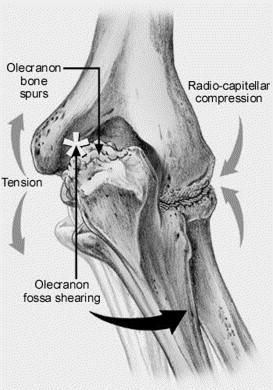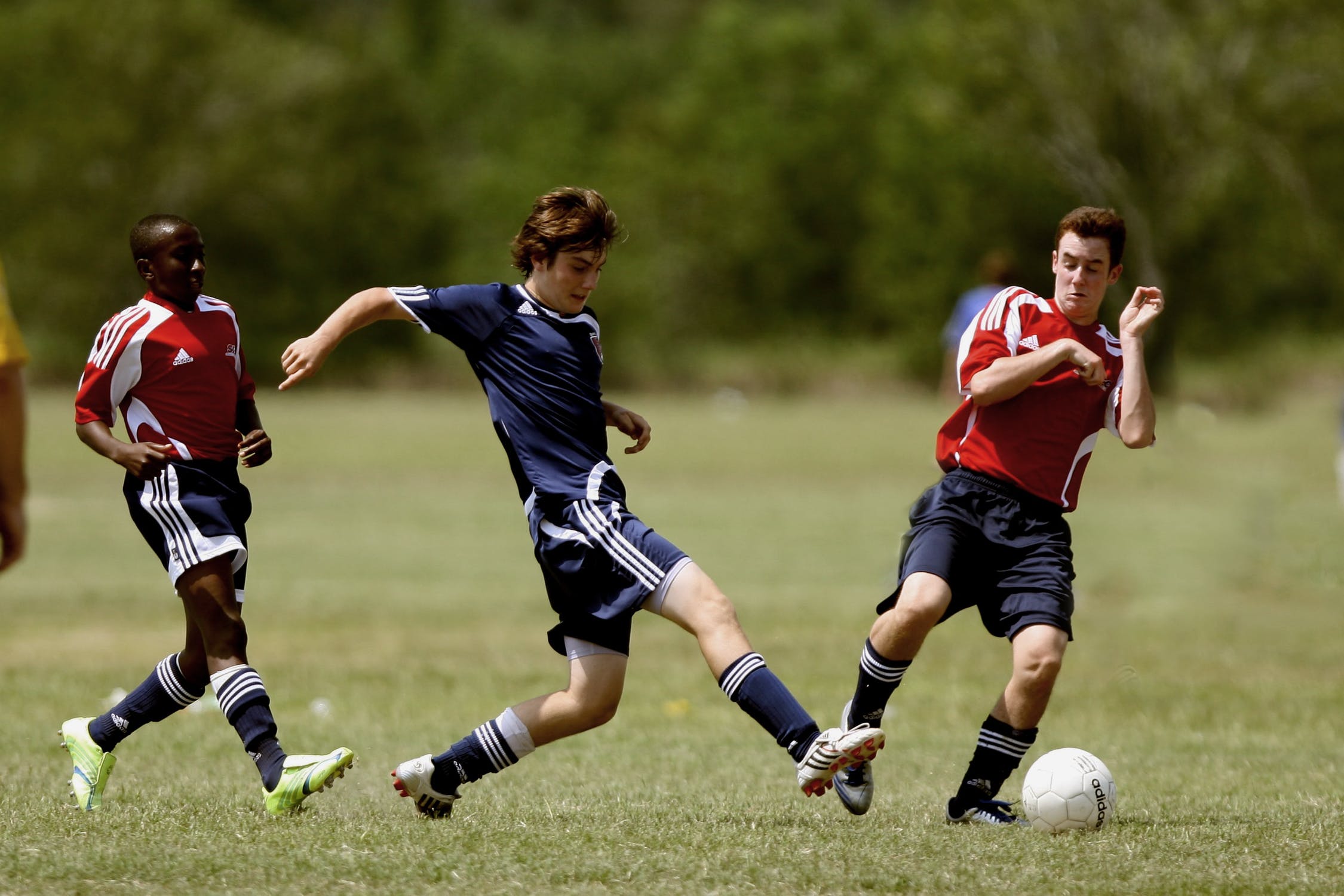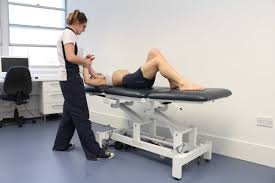nalco group
bone, muscle & joint pain physio
BOOK NOW / WHATSAPP ABOUT YOUR PAIN OR INJURY
- NOVENA 10 Sinaran Drive, Novena Medical Center #10-09, Singapore 307506
- TAMPINES 9 Tampines Grande #01-20 Singapore 528735
- SERANGOON 265 Serangoon Central Drive #04-269 Singapore 550265
Home > Blog > Physiotherapy & Hand Therapy > Conditions We Treat / Hand Conditions > Elbow Pain > Medial Olecranon Fossa Impingement Elbow Pain Physiotherapy
Medial Olecranon Fossa Impingement Elbow Pain Physiotherapy

Medial olecranon fossa impingement is a type of elbow injury caused by compression and damage to the soft tissues or cartilage.
It is typically characterized by:
- Pain
- Tenderness
- Swelling
- Stiffness
- Limited mobility and
- Loss of strength in the elbow
Medial olecranon fossa impingement is also known as:
- Pitcher’s elbow
- Postero-medial elbow impingement
- Posterior elbow impingement
- Valgus extension overload syndrome
This type of injury is common in athletes and people who excessively use their elbow for throwing, punching, and similar forceful movements. If not treated on time, pain due to olecranon fossa impingement can gradually develop into more serious problems like bony spurs.
In this article, we provide a detailed overview of what medial olecranon fossa is and how it can become impinged. We discuss the symptoms and treatment for this condition and explore how physiotherapy can provide lasting relief from pain.
What Is Medial Olecranon Fossa Impingement

Medial olecranon fossa impingement refers to the impaction of the olecranon fossa at the back of the elbow.
The olecranon fossa is a broad and deep triangular depression in the distal end of the humerus, just above the trochlea. The primary function of this recessed bone is to receive the tip of the ulna in the olecranon process during the extension of the forearm.In other words, the olecranon fossa allows the olecranon to sit safely when the elbow is extended.
If the olecranon head gets jammed into the fossa due to any reason, that becomes what is known as medial olecranon fossa impingement.
The condition can be hard to identify at first, especially when the damage occurs due to repetitive motion over a period of time. Unfortunately, bone spurs can easily develop with fossa impingement, which can further aggravate pain. In some cases, it can also lead to soft tissue degeneration, which can severely affect your ability to move and use both your elbow and forearm.
Patients with medial olecranon fossa impingement generally present with a complaint of pain and joint instability during elbow flexion. Athletes, including tennis players, baseball pitchers, and javelin throwers, are prone to olecranon fossa impingement. Otherwise, the condition is rare in the general population.
If you experience discomfort performing overhead motions, such as playing basketball or find it painful to fully straighten your elbow, you mighthave an impinged olecranon fossa.
What Causes Medial Olecranon Fossa Impingement
Fossa impingement generally occurs when a sideways (valgus) force is applied to the muscles in the arm while the elbow joint is locked – i.e. in an extended position.
This is typical in contact sports, such as rugby. For example, when blocking at the line of scrimmage, players often have their hands outstretched against the opponent. If the opponent delivers a valgus blow in an attempt to break free, it can easily impinge the other player’s elbow.
Other factors that can cause your olecranon fossa to become impacted include:
- Falling with your arms extended in front
- Pushing a heavy piece of furniture, e.g. a bookshelf, across the floor
- Overtraining at the gym, especially with workouts involving push-ups, chest press, bench dips, and similar exercises
- History of closely related elbow conditions, such as olecranon bursitis or carpal tunnel syndrome
- Having a medical problem like arthritis or Paget’s disease

Symptoms of Medial Olecranon Fossa Impingement
The typical symptom of olecranon fossa impingement is pain or tenderness at the outer side of the elbow.
The elbow pain and ache can be persistent, although in early stages, it’s usually felt only when throwing or serving in racket sports at full speed.
Joint stiffness might develop and experienced over the passage of time.
Patients with an impinged olecranon fossa also experience difficulty in straightening the affected arm. Depending on the extent of injury and how deeply the fossa has been impacted, there might be a loss of strength in the upper arm as well.
At later stages, it can lead to locking and catching of the elbow.
Who Is At Risk of Medial Olecranon Fossa Impingement?
- All throwing athletes, including volleyball and basketball players, are at high risk of olecranon fossa impingement.
- People who frequently partake in activities like swimming also have a high chance of impinging their olecranon fossa at some point or another.
- Weightlifters are prone to impingement of the fossa as the tensile strength built up in the forearm muscles tends to push the olecranon head farther into the fossa.
- Gymnasts are susceptible to this type of elbow injury, especially when practicing backflips or other moves where they land on their hands.
- Football linemen, baseball pitchers, and javelin throwers are likely to suffer from fossa impingement with frequently forced extensions of the elbow.
- Boxers have an increased risk of developing this condition due to inflammation of the joint lining resulting from hyperextension orrepetitive blows to the elbow.
- Badminton and tennis players are prone to posteromedial elbow impingement, especially when serving topspin forehands with the racket held more tightly than required.

Conditions Similar to Medial Olecranon Fossa Impingement
Differential diagnoses for this type of elbow injury include the following elbow conditions:
- Olecranon bursitis
- Osteochondritis dissecans
- Osteoarthritis
- Ulnar nerve entrapment
- Cubital tunnel syndrome
- Ulnar collateral ligament (UCL) injury
- Snapping triceps syndrome
- Osteochondral defect
- Olecranon stress fracture
- Posterolateral rotatory instability (PLRI) of the elbow
Treatment for Medial Olecranon Fossa Impingement
The treatment for impinged medial olecranon fossa begins with the identification of the impacted bone.
Doctors often refer patients to undergo a thorough physical exam to allow for a complete and accurate diagnosis of the impingement. This usually includes an x-ray or an ultrasound scan to determine exactly where the fossa has been jammed.
If the x-ray or ultrasound scan does not reveal satisfactory results or if the symptoms indicate the possibility of loose bodies formation, an MRI scan may also be referred.
Some patients may also be required to take a CT scan. This helps the doctors determine the extent of damage and rule out the differential diagnoses for this condition.
The medial olecranon fossa impaction of the elbow is usually treatable with non-operative methods.
This includes conservative pain management techniques like RICE (Rest, ICE, Compress, and Elevate) or POLICE (Protect, Optimally Load, Ice, Compress, and Elevate) coupled with a hand and elbow physiotherapy program.
Depending on the severity of your condition, it may help to take pain medications to alleviate the symptoms. Over-the-counter medicines like ibuprofen or naproxen often help reduce pain and inflammation. Your doctor may also prescribe corticosteroids or hyaluronans to treat the injured joint.
If non-invasive methods fail to bring relief from pain and restore healthy joint function, surgery may eventually be required.
However, this happens rarely and normally in extreme cases where spurs and loose bone fragments within the elbow present complications and prevent recovery.
How elbow Physiotherapy with phoenix rehab Can Help People with Medial Olecranon Fossa Impingement

Physiotherapy has well-known and proven benefits for virtually all kinds of hand and elbow conditions. And this includes fossa impingement as well.
Physical therapy for the hand and elbow can not only dislodge the jammed olecranon fossa, but also improve the strength and flexibility of the joint.
In fact, even in cases where fossa impingement is treated surgically, patients are required to follow up with a physical rehabilitation program to avoid post-op problems and ensure complete recovery.
The professional physiotherapists at Phoenix Rehab use a range of different stretching and strength-building exercises to help the patients achieve lasting relief from pain.
Every plan is completely customized.
However, broadly speaking, it revolves around pain-free flexibility moves until the basic joint function is restored. Once you regain the ability to use your elbow for simple, day-to-day activities, the physiotherapist will incorporate other exercises to increase the range of motion and ensure an optimal outcome.
A well-rounded physical therapy treatment plan to ensure efficient and effective healing may also include:
- Soft tissue massage
- Joint mobilization techniques
- Cold therapy and heat therapy
- Electrotherapy such as ultrasound therapy to accelerate soft tissue injury healing
- Deep tissue release therapy
- Manual, hands-on therapy
Note that the success of physiotherapy is largely dependent on the patient’s compliance. During the course of your physical therapy treatment, it’s important that you avoid provocative activities involving full elbow extension. Allowing your affected arm to rest sufficiently plays a key role in the healing process.
At the final stage of the treatment, our qualified physiotherapists take patients to a graduated return to their preferred activities. Here, the emphasis is placed on posture correction and the proper use of hands and elbows, especially when throwing or serving in contact sports.
Since fossa impingement typically results from poor biomechanics, learning proper positioning of the hand, wrist, arm, and elbow is of prime importance in preventing reinjury.
Pain due to olecranon fossa impingement can significantly limit your ability to use your elbow with ease. However, remember that the condition is generally not serious, especially when it’s caused by micro-traumatic stress. The key is to consult a physician and seek medical advice on time.
If done properly and consistently, physical therapy can help patients with an impinged fossa return to sports within 3 months or fewer.
